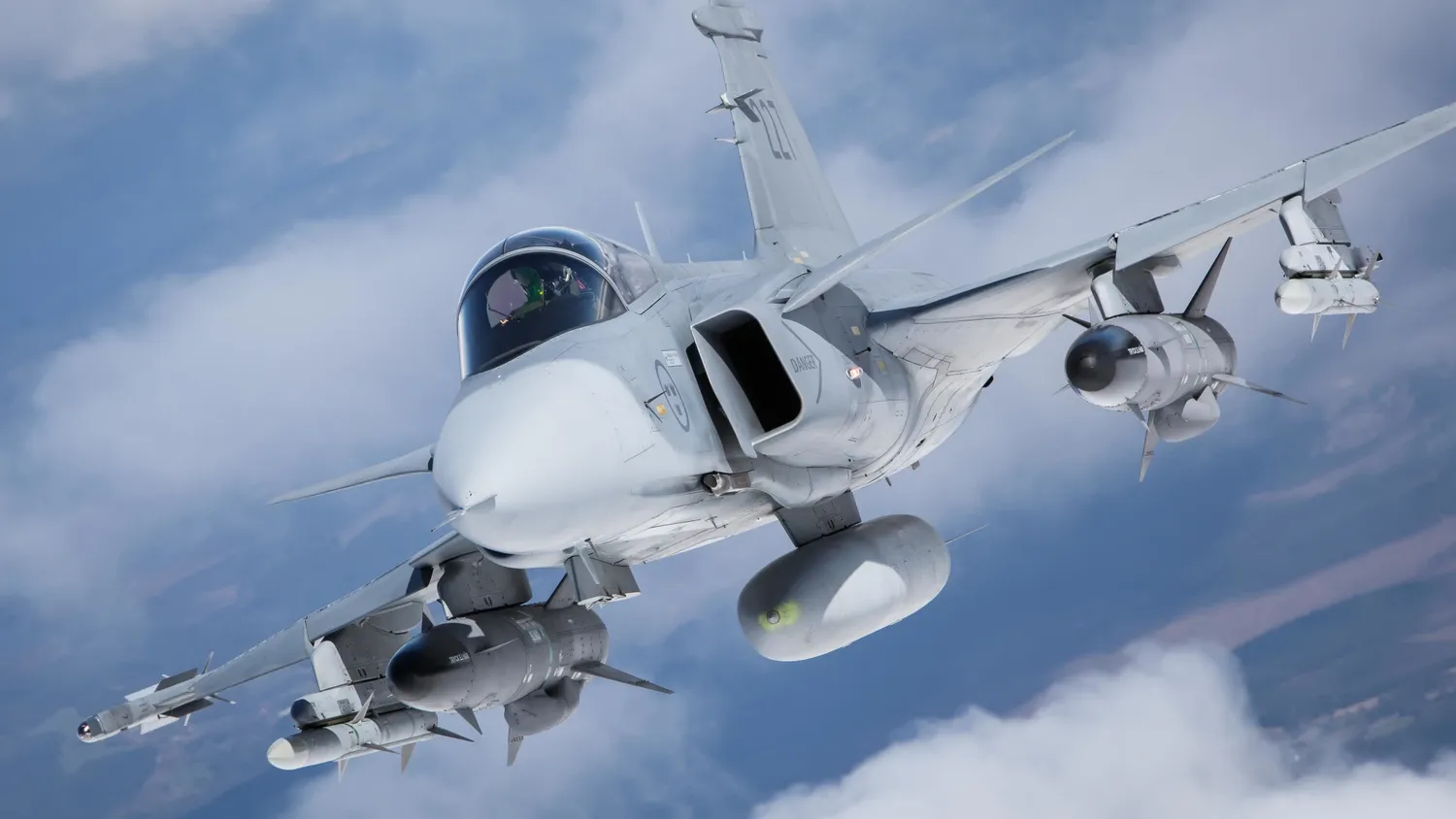Think tank suggests transferring Gripen fighters to Ukraine as soon as possible
The combination of modern electronics, effective ECM, lethal weaponry and its ability to conduct dispersed operations, with a low logistical footprint, would facilitate the early integration of the Gripen into the Ukrainian Air Force.
The Royal United Services Institute for Defence and Security Studies (RUSI), an influential think tank specializing in Defense and Security, advises that to support Ukraine in this new stage of the conflict, in which Russian forces are retreating to consolidate their defensive positions, it is necessary to rapidly equip its Air Force with Western fighters that can counter the superiority of the Su-35 and MiG-31, while being able to operate regularly outside of air bases and having a relatively low logistical requirements. Under these conditions, the small but lethal Swedish Saab Gripen fighter is seen as the ideal candidate.
According to RUSI’s analysis, Russian pilots have been cautious throughout the war, so even a small number of Western fighters could have a significant deterrent effect.
The decision to supply a Western fighter would be inherently influenced, and most likely ultimately decided, by political factors. In the long run, U.S.-supplied aircraft are likely to form a large part of the inventory of the future Ukrainian Air Force due to political, industrial, and financial considerations.
However, Ukrainian air bases remain at high risk of Russian missile or loitering munitions attacks. The long, high-quality runways and large hangars with extensive ground support equipment required to operate most U.S. fighters would be difficult to build without being observed and hit.
That is why in the short to medium term, Western fighter aircraft delivered to Ukraine must be capable of dispersed operations, using mobile maintenance crews and small support teams, and flying from relatively hard runways, to avoid being neutralized by Russian long-range strikes.
Engineered for this type of warfare
The Swedish Saab Gripen C/D is by far the most suitable candidate in terms of meeting these operational requirements. It was designed from the outset for ease of maintenance, and can be refuelled, re-armed and given basic maintenance by teams of just six ground crew using two vehicles on small airbases or highways, even in the harsh conditions of the northern winter. Moreover, only one of each crew needs to be a highly trained maintainer; the rest can be conscripts or even troops.
See also: Saab receives order to modernize Swedish Air Force JAS-39 Gripen C/Ds
Conceptually, the Swedish Air Force has always emphasised low-level air superiority tactics from dispersed bases, in a similar manner to how the Ukrainian Air Force currently operates, and so the Gripen was designed with ground support equipment and maintenance requirements compatible with that approach.
The Gripen C/D’s electronic warfare suite is also specifically optimized to counter Russian fighter and SAM radars. Other factors that make the Gripen particularly suited to Ukrainian operational needs is that it can fire the very long-range European MBDA Meteor missile, which, thanks to its ramjet propulsion design, is less affected by being launched from low altitude and low subsonic speed than traditional rocket-powered missiles such as the R-27 or the AIM-120 AMRAAM.
The latter is particularly important to counter the supremacy shown by Su-35S and MiG-31BM fighters, operating from high altitudes, where they proved always effective and lethal against Ukrainian aircraft, thanks to their powerful radars and air-to-air missiles, in beyond visual range (BVR) engagements.

Finally, it should be remembered that the Gripen C/D are very effective multirole fighters, being able to use various reconnaissance, electronic warfare or target designation pods, as well as a wide assortment of air-to-ground and anti-ship smart munitions, covering with a single aircraft model, the entire spectrum of missions required in modern air warfare.


Comentarios
Para comentar, debés estar registrado
Por favor, iniciá sesión